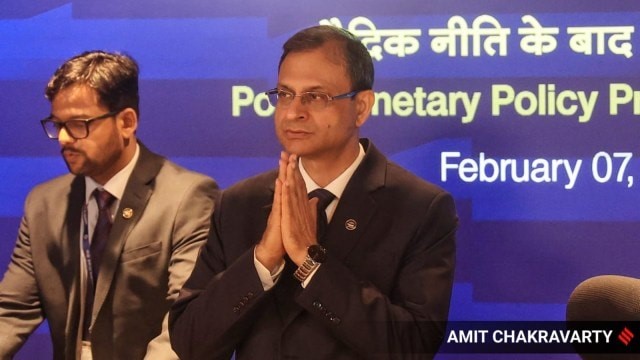RBI Monetary Policy Committee (MPC) cuts Repo Rate

- 09 Feb 2025
In News:
In a landmark decision during its February 2025 meeting, the Reserve Bank of India’s (RBI) Monetary Policy Committee (MPC) reduced the repo rate by 25 basis points, from 6.5% to 6.25%, marking the first rate cut in five years (since May 2020). This move follows the Union Government’s recent cut in personal income tax, aimed at boosting consumption.
What is the Monetary Policy Committee (MPC)?
The MPC is a six-member statutory body responsible for setting India’s monetary policy. Its primary objective is price stability while ensuring economic growth. It meets bi-monthly to assess economic indicators and modify key policy rates like the repo rate, which influences overall borrowing and lending costs in the economy.
Key Highlights from the MPC Decision:
Repo Rate Cut:
- Reduced to 6.25% from 6.5%.
- Objective: Stimulate credit growth, investment, and consumer demand.
- Expected Impact: Lower EMIs for borrowers, reduced interest rates on EBLR and MCLR-linked loans.
GDP Growth Outlook (FY26):
- RBI projects 6.7% GDP growth for FY26.
- This is slightly higher than the FY25 estimate of 6.4%, and in line with the Economic Survey’s projection of 6.3–6.8%.
- Growth recovery is attributed to calibrated fiscal consolidation and stable private consumption.
Inflation Projections (CPI-based):
- FY26 Inflation Estimate: 4.2%
- Q1: 4.5%
- Q2: 4.0%
- Q3: 3.8%
- Q4: 4.2%
- CPI inflation had already dropped to 5.22% in December 2024, aided by easing food prices.
- RBI emphasized continued transmission of past policy measures and food price moderation as drivers of disinflation.
Broader Monetary Policy Context
- RBI will maintain a “neutral” policy stance to remain flexible amid evolving macroeconomic conditions.
- RBI Governor Sanjay Malhotra stressed that the inflation-targeting framework has helped stabilize prices, especially post-pandemic.
- The policy space was created by the simultaneous drop in inflation and moderate growth, allowing support for the economy without derailing price stability.
Cybersecurity & Digital Measures
- Additional Factor Authentication (AFA) introduced for international digital payments.
- Launch of exclusive domains:
- "bank.in" for Indian banks
- "fin.in" for the wider financial sector
These aim to bolster digital transaction security amid rising cyber fraud.
Forex & External Sector Outlook
- RBI reiterated that it does not target exchange rate levels, intervening only to curb excessive volatility.
- Ongoing global challenges include:
- Strengthening of the US dollar
- Higher bond yields
- Geopolitical tensions
- Threat of trade wars
- These have led to capital outflows, currency depreciation, and increased financial market volatility.
Conclusion
The RBI’s rate cut signals a strategic shift towards supporting economic growth amid global uncertainties. With a moderate inflation outlook and improving macroeconomic indicators, the decision is expected to boost domestic demand and investment, while reinforcing RBI’s commitment to price and financial stability.
